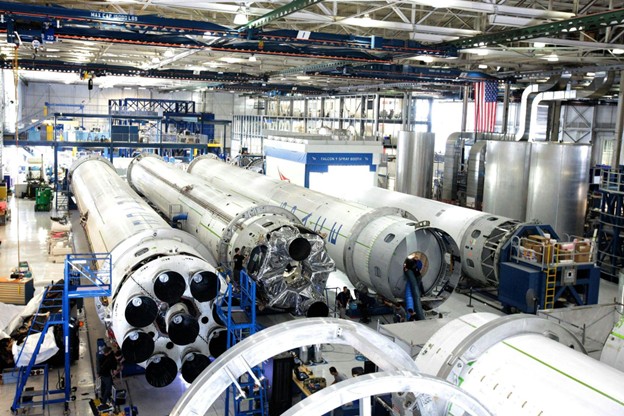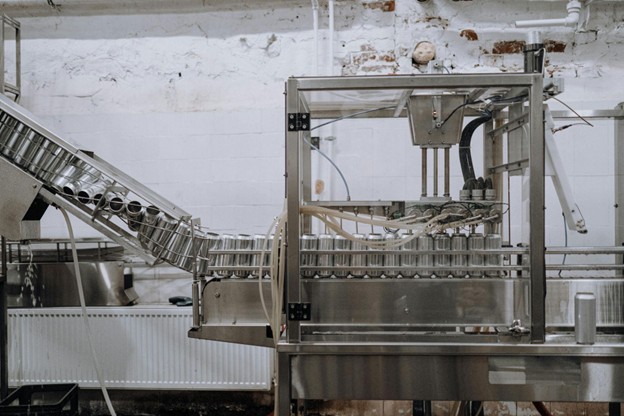 DOI : 10.17577/
DOI : 10.17577/Tech’s rewriting the manufacturing playbook, pushing companies to churn out goods faster, sharper, and cheaper. With market demands cranking up and costs always under the microscope, two heavy hitters—automation and artificial intelligence—are stealing the spotlight. Both are game-changers, slashing errors and boosting output, but they’re not twins. They’ve got different vibes, and knowing what each brings to the factory floor is key to picking the right tool for the job.
This isn’t just about fancy gadgets; it’s about staying lean, competitive, and ready for whatever the market throws your way. Let’s break it down.

What Makes Automation Different
Automation’s the reliable workhorse of manufacturing. It’s machines doing tasks on autopilot—think pre-programmed instructions that keep things humming without a human lifting a finger. Once it’s set, it’s like a train on tracks: steady, predictable, done.
You see it everywhere in factories—robots moving parts, spray-painting or welding seams. It’s perfect for repetitive jobs. Automation’s all about speed, consistency, and keeping quality tight, no coffee breaks needed.
The Rise of AI in Manufacturing
AI’s the brainy cousin, not just following orders but thinking through problems. It learns from data, tweaks its approach, and makes decisions on the fly. That adaptability’s a big deal in manufacturing, where things can shift fast.
AI’s popping up in quality checks, scanning products for flaws faster than any human eye. It predicts when machines might crap out, cutting downtime. It’s also a wizard with inventory, forecasting demand, or spotting supply chain hiccups. In a world where change is constant, AI’s like a co-pilot, helping you navigate the chaos.
So, automation vs AI? Automation’s the rule-follower; AI’s the quick learner. Both level up your operations, just in their own ways.
Where Automation Performs Best
Automation’s your go-to for high-volume, same-same tasks. Got a job that repeats like clockwork? Robots are your MVPs. They run all day, every day, with zero whining. That consistency kills errors from tired hands or wandering minds.
It’s a safety win too—let machines handle the heavy, risky stuff like lifting or cutting. Workers stay out of harm’s way and can focus on finesse tasks. The payoff’s clear: faster production, lower labor costs, and products that look identical every time.
How AI Adds a Competitive Edge
AI’s where you turn when you need smarts, not just muscle. It’s like having a super-powered inspector, catching defects in real-time by scanning images. It flags worn-out parts before they tank your line, saving you from costly pauses. And data? AI eats it for breakfast, crunching numbers to spit out insights—tweak your stock levels, predict customer trends, you name it.
That kind of agility keeps you ahead of the pack. Markets shift? AI’s already adjusting. Waste piling up? AI’s got ideas to trim it. It’s not just about doing things right; it’s about doing the right things, period.
Costs and Considerations
Neither tool’s cheap, but they hit your wallet differently. Automation’s got upfront costs—big machines, installation, maintenance. Once it’s running, though, it’s pretty low-drama.
AI’s a different beast. It needs solid data pipelines, cloud setups, and folks who know how to wrangle it. The learning curve’s real, but the long game’s worth it—AI’s knack for optimizing can save serious cash over time. Choosing between them means eyeing the big picture: not just cost, but how much flexibility and growth you need.
Adapting to Change
Manufacturing’s a moving target—new products, picky customers, supply chain snags. AI’s the star here, adapting without needing a full reprogram. Got a new product line? AI learns the ropes fast. Demand spiking? It’s already recalculating.
Automation’s still king for stable, repetitive tasks, but it’s less nimble. The real magic? Mixing both. Let automation handle the grunt work while AI tackles the brainy stuff. That combo’s a powerhouse for staying quick on your feet.


Looking Ahead
Automation and AI aren’t slowing down—they’re reshaping manufacturing from the ground up. Robots will keep taking on the heavy lifting, while AI dives deeper into planning and quality. Humans? They’ll steer the ship, guiding these tools to max impact.
Smart companies aren’t picking sides—they’re blending both for a lean, mean operation. Automation for consistency, AI for agility. That mix is how you pump out goods faster, pivot smoother, and waste less. In 2025 and beyond, it’s not just about keeping up—it’s about setting the pace.




